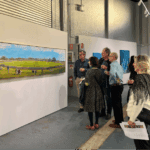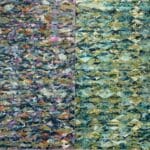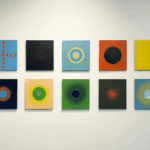The remote Aboriginal community of Utopia is situated about 3 hours drive from Alice Springs and it was here in 1988 that the batik project Utopia: a picture story was completed. This was the first of several collective enterprises supported by CAAMA (Central Australian Aboriginal Media Association), and subsequently purchased by The Holmes à Court Collection.
The Utopia Community takes its name from Utopia Station. In the 1970s the Alyawarr and Anmatyerre people began moving back to this traditional land, eventually gaining title. Batik-making activities began at this time. Over the next decade they earned a reputation for their unique and beautiful batiks and paintings.
The residents of Utopia adopted a technique from the Indian Ocean region which was not traditionally their own and produced stunning batik designs incorporating traditional elements. From this project they developed another manifestation of their work using modern acrylic paints on canvas and board. These new forms have given another dimension to the visual expression of a rich cultural heritage. The most renowned of the Utopia artists was Emily Kame Kngwarreye, who worked in both media. Today Kngwarreye’s work is held in the highest esteem in Australia, and her vibrant and beautiful works are in collections all over the world.
“The remote Aboriginal community of Utopia and the development of the art of that region became an early focus for The Holmes à Court Collection. Robert and I became interested in the original batik project of the early 1980’s, which produced an extraordinary body of work by Aboriginal women working in a non-traditional medium. Subsequent projects such as ‘Utopia Women’s Paintings’ and the ‘One Dreaming (Yam Story)’ revealed unique collective and individual strengths from which Emily Kame Kngwarreye emerged as a major artist. Her influence on the other members of her community, and on contemporary Aboriginal art, was profound. We became committed to collecting these and other bodies of work in their entirety, to track the development of the individual artist and as a lasting record of community group activity.”
Janet Holmes à Court
This exhibition represents the Collection’s comprehensive representation of Emily Kame Kngwarreye, from her first painting on canvas (1988-89) to the expressive, large scale canvases and bold ‘Body Marking’ paintings (1992-94) produced late in her career.






